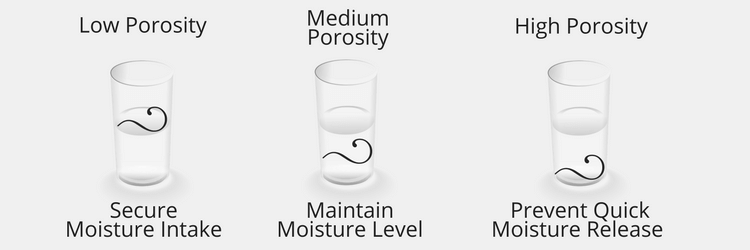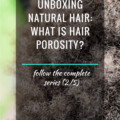Welcome back to the #HairRoutinePrepWork post series! In this 3-week post series, I am guiding you into what you need to avoid, what you need to do and what you need to consider for a stress-free hair routine before you even start building it. So today, we’ll be specifically talking about two things you need to know to build your hair routine and how you can go about discovering that information. ready to get the ball rolling?
If you just landed here, you might have missed the first post in this series and you may want to go back and read it. I recommend it, you don’t wanna miss all the juicy info I’m sharing. 🙂
- 3 Mistakes You’re Making When Building Your Natural Hair Care Regimen
- 2 Things You Need To Know To Build Your Curly Hair Routine
- 3 Things You Need To Consider For A Stress-Free Curly Hair Routine
Oh, and don’t forget to get the free worksheet guide I created to go along with this post series.

While in my previous post I mentioned that having a set of rules and practices and being consistent in following them is what will lead you to healthy hair, this doesn’t mean a hair routine is only aimed at those with damaged or slightly damaged hair. No, a hair regimen (or routine) is for ALL.
For those with damaged hair, it will nurse it back to health and for those with healthy hair, it will maintain its health, retain length and possibly potentiate its growth. (I bet you like this one, right! 😉 )
The key thing to do when building your hair regimen is to keep your hair needs in mind. So you need to know your hair’s traits and your hair needs. The easiest way to discover this is to record, track and assess what you do to your hair, a journal or diary will help you do this.

Having said all this, now you ask me: “How do I go about discovering that, Monica?”
Well, in Shed & Rescue I go over your hair regimen, discuss your hair health, practices, goals and more to help you build your hair regimen blueprint. Alternatively, you can keep reading this post-series where I’ll unveil a little bit of the ‘secret’. 😉
Know Your Hair Needs
I’m always going on about this (or at least I feel like I am 😕 ), but you can’t take proper care of your hair if you simply ‘copy and paste’ someone else’s routine or make a ‘Frankenstein version’ with bits and pieces stolen here and there from favourite bloggers, friend or magazine. No. In fact, it can end up having disastrous results for your hair!
So it begs the question, how do you really know your hair’s needs? You may think your hair needs moisture because it feels dry when all it needs is nutrition (emollients, oils, butter) or a combination of both. To know this, you do what I always recommend.
No, you don’t discover your hair’s curl type, forget about that for a moment, please! 🙄 You need to discover your hair’s porosity, a health measurement that tells you your hair’s ability to accept and retain water. This is directly related to how the cuticle layers of the hair lie down, which is influenced by your hair’s natural characteristics and any damaged it has suffered.
Curl type doesn’t give you this, clear?! Okay, so let’s move on to finding out what your hair’s porosity is.
1#| Porosity Test & What It Means
Because I’m always hammering the same thing, those who follow me for a while know what I’m talking about when I say ‘Do a porosity test to discover your hair’s needs’. However, I will explain again to all those who don’t regularly follow me (shame on you! 😉 ) or if you forgot how to do it or what the results mean.
To make this test you’ll need a few strands of hair but please, don’t pluck them! One because it’s painful and two, because you can use your shed hair. Make sure your hair is clean, with no conditioner, moisturiser or gel. Make sure it’s just washed with shampoo, preferably a clarifying one and that it’s dry, not wet.
Take your clean, shed hair and place it inside a glass of water. After a few minutes compare your observation against the image below.

As you can see, it’s a simple and easy test to make and it’s just what you need to know to get started. Well, … first I need to tell you what all this means.
A floating result, or hair that remains on top of the water, means you have low porosity hair. If it didn’t float or sink down you have medium porosity and if it travelled all the way down the glass of water, sinking down to the bottom you have high porosity test. Have a look at the image again.

So now you know all this, you just need to find out what the heck this really means, right!? Okay, pay attention then:
- Low Porosity – hair that has its cuticle layers tightly closed, making water or moisture penetration very difficult.
- Medium Porosity- hair that allows water penetration fairly easy and gradually releases it.
- High Porosity – hair that has its cuticle layers wide open and/or damaged and allows the free and quick absorption and release of water.
Based on these findings it is fair to say you now have an idea of what your hair needs and how you can start to build your hair routine. Don’t forget to record your findings in a diary or journal for future reference, these details can change over time and with hair care practices.
Hair Regimen Based On Needs
Relying on what we’ve covered so far, you know your hair’s porosity by now and you have an idea of what your hair needs. Given that moisture is so important for curly hair you can naturally assume that guided by your hair’s porosity test results, you can now build a hair regimen that focuses on:
- Low porosity hair – facilitating enough moisture penetration to avoid dehydrated hair since its tight cuticle layers retain water for long periods of time.
- Medium Porosity – making sure the hair moisture level is always optimal to keep hair smooth and healthy.
- High Porosity – securing not only moisture penetration but more importantly, making sure it stays in for as long as possible so it is released gradually.

Though it may seem you now have the knowledge you need to start putting the pieces to build a hair regimen, you still need to know one more important thing.
Yeah,… I’m sorry to be bursting your bubble, but you’re definitely not finished yet. Sorry… 😐
2#| Moisture, Yes! But You Also Need… Protein
Moisture practically demands and dominates all our attention when it comes to curly hair care, and this is because our natural hair is inherently unable to maintain moisture because of its characteristics (read more in Transitioning To Natural Hair And Understanding Your Curly Hair). Therefore, it is very easy to forget something all hair types need: Protein.
If you remember well, in my first and previous post of this 3-part post series (make sure you follow it, start here) I talked about proteins and why they are so important in a hair regimen.
Now that you know your hair’s porosity, what it means and how it relates to your hair’s needs how do you then take this information, find your hair’s protein needs and start building a hair regimen?
Porosity, Moisture & Protein
Luckily, your porosity test results can give you an important hint. Let’s look at the image below.

High Porosity Hair
As you can see, it’s quite logical. If you have high porosity hair, through damage or genetics, the cuticle layers of the hair are open and make it more vulnerable to damage, or further damage. This will happen gradually, from the outside (cuticle layers being broken and left with holes or broken) to the inside (debilitating cortex) as you witness split ends, hair breakage and dry hair.
In this case, you need to build a hair regimen that prevents quick moisture release, but has a special focus on reconstructing and strengthening the internal structure of the hair. This will be an important part as you gotta avoid any possible or further damage to your hair. Therefore, reconstructing (doing a protein treatment) is something you would do twice a month and adapt as your hair changes, for instance.
Low Porosity Hair
For low porosity hair, the focus is more on balancing the hair’s moisture needs to avoid dry hair as its internal structure is not as exposed and vulnerable. Still, you will also need to do the occasional protein treatment to help fight off any damage and keep the hair’ structure strong and resilient. Doing it every 6 -8 weeks can be ideal.
Medium Porosity Hair
As for medium porosity hair, the same principle applies, but in this case, moisture and protein needs seem to be balanced. Therefore, a protein treatment should be due once every month. Nutrition is made evident in the image above because it may be the only thing lacking in medium porosity hair, which makes it frizzy, rough and dull. By increasing the use of vegetable oils and butter in the hair regimen this hair can increase its emollience and smoothness and decrease frizz.
Caution!
As you can see a balance between moisture and protein is maintained by giving more of what the hair needs. However, you should bear in mind this doesn’t mean you’ll be giving your hair more moisture than protein or vice versa. No, moisture will always be paramount to curly hair. What this means is that you need to give more of what your hair is lacking.
Remember, these are suggestions for a hair care routine that doesn’t engage in damaging practices (dyeing, use of heat tools, chlorine, etc.), in this event you need to adjust your hair regimen, this is something we’d do in Shed & Rescue.
I hope you now have an understanding of what you need to avoid and what you need to know before you build your hair regimen. To help you follow the 3-part post series don’t forget to download the worksheet guide and keep a record of your hair care practices so you can adjust, correct or eliminate them to improve your hair routine.

In the meantime, stay tuned for the final post in the #HairRoutinePrepWork 3-part series. Next week will be talking 3 Things You Need To Consider For A Stress-Free Curly Hair Routine.






